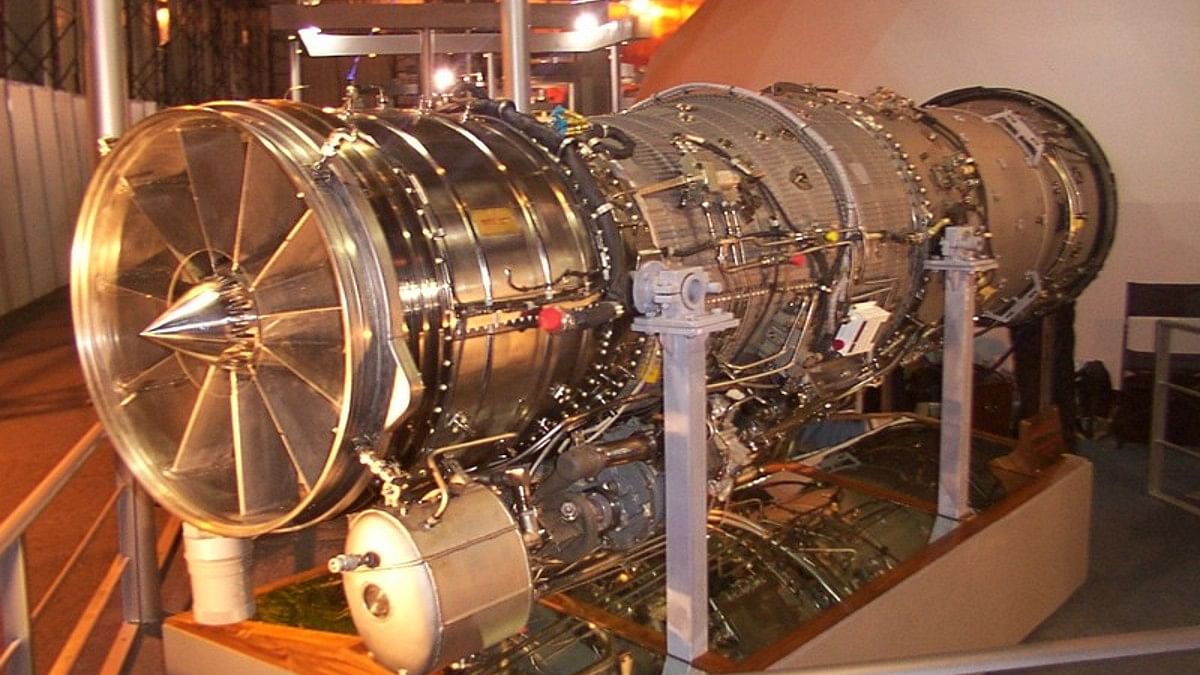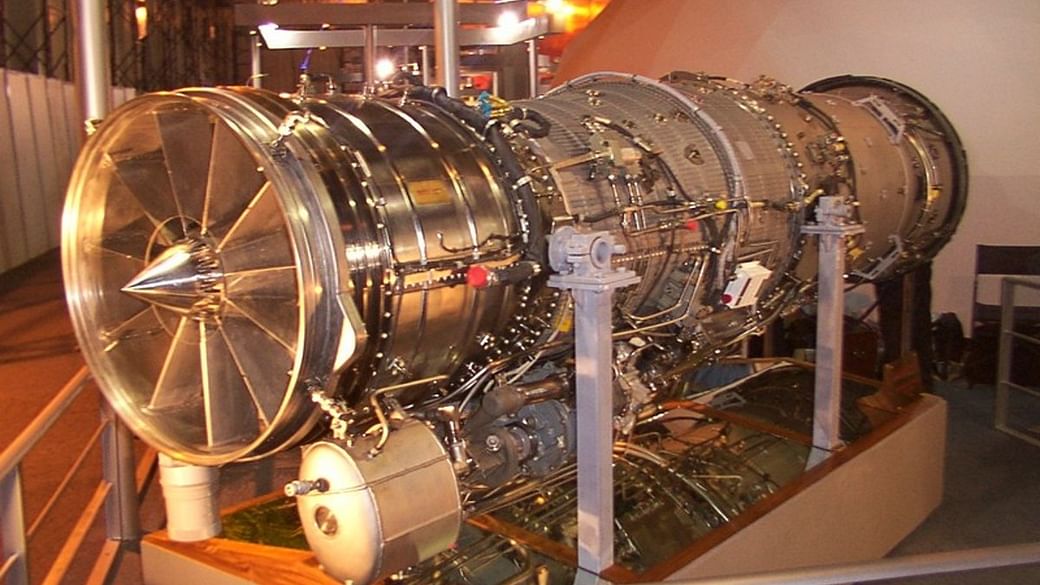Despite successes in the space and missile programme, India’s hopes of powering fighters with a homemade engine haven’t succeeded.

theprint.in
Why likely €1 bn French deal is a reminder of India’s failure to build indigenous jet engine
Despite successes in the space and missile programme, India’s hopes of powering fighters with a homemade engine haven’t succeeded.
SNEHESH ALEX PHILIP
9 June, 2022 09:00 am IST
File photo of the indigenous Kaveri jet engine | Commons
Text Size: A- A+
New Delhi: Later this month, Defence Minister Rajnath Singh is slated to review one of India’s most strategically important projects — the development of a 120-kN (kilo Newton) engine to power the country’s futuristic 6.5-generation Advanced Medium Combat Aircraft (AMCA).
The fighter jet is expected to form the cornerstone of the Indian Air Force’s manned tactical fleet within the next decade.
But there’s a problem right at the starting line — there is no indigenous jet engine to power India’s most ambitious planned aircraft.
French engine giant Safran is asking for more than €1 billion to transfer the technology needed to make the engines, as part of Rafale offsets contracts.
When it signed the €7.8 billion Rafale deal with India in 2016, France committed to investing 50 per cent, or €3.9 billion, in India in return for the deal.
For India’s jet-engine scientists, as well as the air force, the €1 billion deal is a painful reminder of the country’s failure to produce a combat jet engine of its own.
The country has achieved significant successes in producing power plants
for the space programme, as well as missiles. Progress on developing an indigenous combat jet-engines, though, has been elusive.
India, government sources said, is now exploring working jointly with France to produce a new jet engine for the future aircraft of both countries. Last year, British firm Rolls-Royce told ThePrint it was also
keen to work with India on co-developing and manufacturing engines for the AMCA.
The government, however, seems keen to make the deal with France happen, official sources said, deepening collaboration with a country that has been among India’s most important providers of cutting-edge military technology.
The combat jet-engine challenge
Few countries have succeeded in mastering the complex technologies needed to produce jet engines for combat aircraft.
Until recently, only China’s fifth-generation J-20 fighter — also known as the ‘Mighty Dragon’ — was
originally equipped with the Russian-made AL31F engine, and then with the WS-10 Taihang.
Derived from CFM-56II turbofan engines
imported from the United States in the 1980s, the WS-10, however, suffered from chronic problems of power and maintenance.
The WS-10 has begun to be replaced with the more powerful and modern WS-15, but is still, by the estimation of some experts,
a generation behind modern Western jet-engine technology.
Even the engines that power the Boeing 747 civilian airliner have at least 40,000 parts. Temperatures in the combustion chamber can go up to 1,400ºC.
These high-end technologies are so difficult to master that very few countries succeed,
according to Timothy Heath, an expert at Rand Corporation, an American, non-profit global police think tank.
In some senses, the ability to manufacture combat jet-engines is the true test of a country’s military-industrial base. All five permanent members of the United Nations Security Council — the United States of America, Russia, China, the United Kingdom and France — make advanced engines.
Although some countries like Japan and Germany have the technology to also do so, few outside this elite club have manufactured successful combat jet engines.
Failed efforts to master technology
India’s search for its own combat jet-engine was shaped by the problems faced by the
HF-24 Marut, the country’s first indigenous fighter.
The Marut was to have been powered by the Bristol Orpheus 12 engine. When the North Atlantic Treaty Organisation (NATO) project to develop the engine collapsed, though, India was forced to accept the less-powerful Bristol Orpheus 703.
The Gas Turbine Research Establishment (GTRE) in Bengaluru eventually produced a version of Orpheus 703 with afterburners, significantly enhancing the engine’s power. The engine, though, proved
unsuitable for the Marut’s airframe — making the otherwise-excellent aircraft obsolete before its time.
In 1983, the government
sanctioned work on the multi-role Light Combat Aircraft (LCA), at an estimated cost of Rs 560 crore. The LCA was meant to
replace the Soviet-made MiG-21.
Feasibility studies carried out in India and abroad revealed that while there was no entirely suitable engine available anywhere in the world, the Rolls-Royce RB-1989 and General Electric F404-F2J engines, by and large, met the requirement.
The GTRE, since 1982, had been working on the indigenous GTX-37 engine, and pushed for its adoption on the LCA.
Four years later, a study was jointly carried out by the Aeronautical Development Agency, Hindustan Aeronautics Limited, and GTRE to evaluate GTX-37.
In December 1986, the GTRE proposed the development of the
indigenous Kaveri engine for the LCA. Based on this proposal, the government sanctioned a Rs 382.86 crore project in March 1989.
While GTRE did develop
nine prototype Kaveri engines, as well as four core engines that undertook 3,217 hours of engine testing, including in Russia, they failed to meet the required parameters to power a fighter.
Instead of a so-called ‘wet thrust’ of 81 kN — the thrust the engine can deliver when a fighter needs maximum power — the Kaveri generated only 70.4 kN.
“GTRE has been unable to deliver an engine that could power the LCA despite a cost overrun of 642 per cent and a delay of about 13 years,” the Comptroller and Auditor General (CAG) noted in a
sharply-worded report released in 2011.
“The project is now faced with the alternative of entering into a joint venture with a foreign house for further development of the engine,” the report went on to say.
Large numbers of other critical projects went the same way.
The Advanced Light Helicopter, scholar Eric Arnett
has noted, was meant to be an Indian-designed and Indian-produced helicopter. The Shakti engine used by the helicopter, though, was
co-designed with the French firm Turbomeca.
New roles for old engines
The Kaveri engine is now being redesigned for other applications, like drones.
“The Kaveri project has helped us master several critical technology domains and, because of this project, the ecosystem exists within the country for design, development, manufacture, assembly, testing and qualification of indigenous 80-kN class of engines,” a senior DRDO official told ThePrint.
“In addition, the technological capabilities achieved through the Kaveri project can be very useful in the development of higher-thrust engines such as AMCA class,” the official further said, adding: “It is always a climb when it comes to making something new altogether.”
The problems, experts say, ranged from gaps in metallurgy, manufacturing infrastructure and test facilities, to the denial of critical technologies after India’s nuclear tests. “And no country, even our closest friends, was keen to part with technology for jet engines,” another official said.
India’s jet-engine quest also suffered from a lack of appropriate scientific personnel, CAG noted in its report. “At the time of sanctioning of the project, GTRE had to nearly double its sanctioned strength of trained manpower to cope with the target,” it said.
“Even today, the institute is beset by shortages in the scientific and technical branch personnel which are affecting the progress of the project,” the report added.
(Edited by Gitanjali Das)

www.indiandefensenews.in




